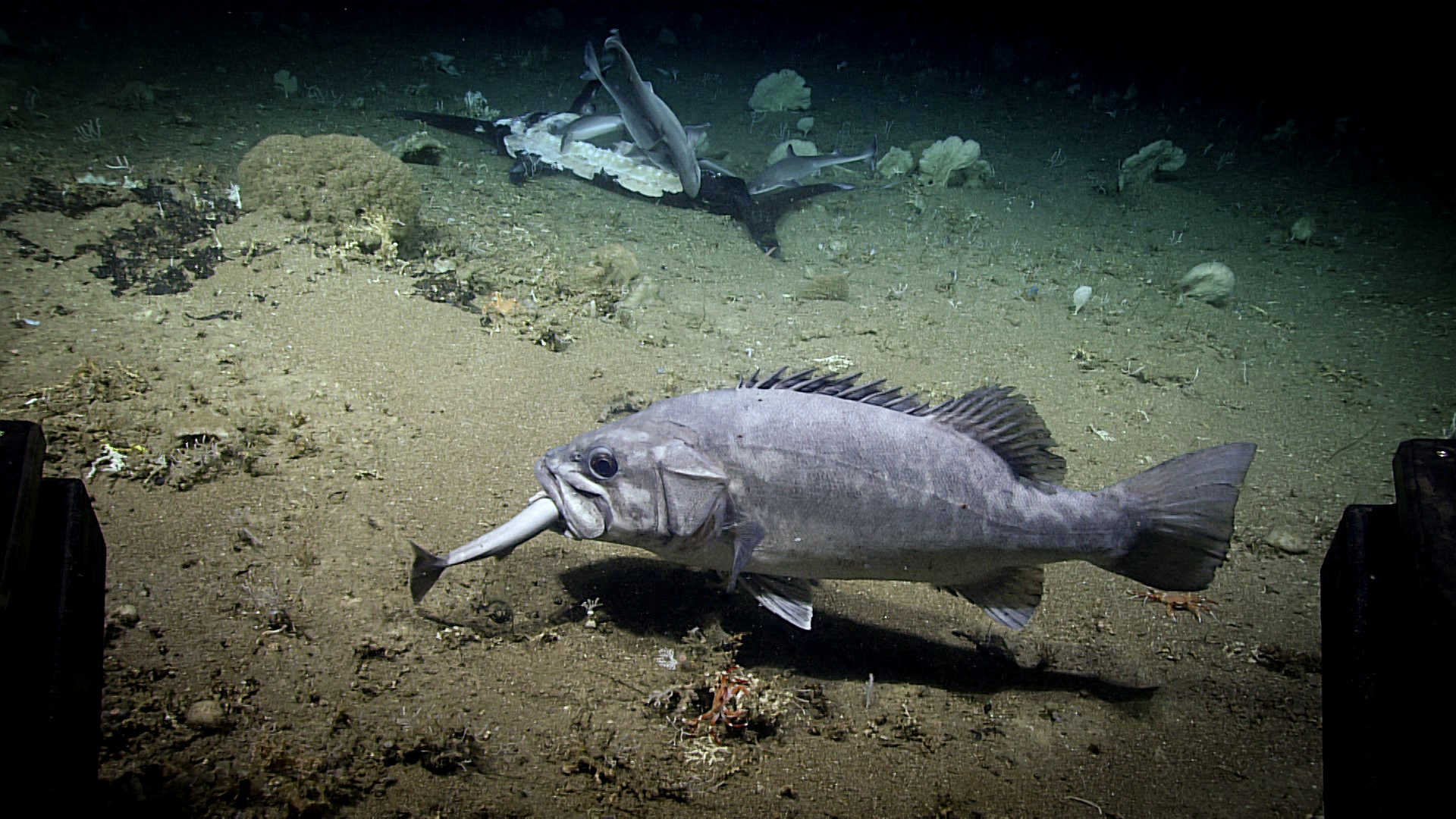The remotely operated vehicle Deep Discoverer (D2) and the telepresence capabilities of NOAA Ship Okeanos Explorer, brought a quite rare biological occurrence for Humans to observe. During the Dive 07 of the Windows to the Deep 2019 expedition viewers watching live have witnessed this fascinating predation in action taking place in the deep ocean.
D2 was following a straight-line on a small topographic rise originally thought to be a shipwreck at about 450 meters (1,476 feet) of depth. As D2 passed over manganese-encrusted rocks, corals, sponges, she encountered a group of sharks in what looked to be a feeding frenzy. A dead swordfish, approximately 2.5 meters (8 feet) in length, was spotted lying on the seafloor with at least 11 sharks vigorously feeding on it.
The sharks were of two species of deep-sea dogfish from the family Squalidae. The smaller and more numerous animals are now known as Genie’s dogfish. At least two of the larger sharks are roughskin dogfish. Both species occur in deep waters along our continental margin, at depths from approximately 213-610 meters (700-2,000 feet). The large bony fish (not a cartilaginous fish like sharks), is a wreckfish, also a deep-sea species.
The swordfish must have died fairly recently, perhaps only by a few hours, based on the condition of its body and the rapid rate of consumption of its tissues by the sharks. The cause of the death is unclear. There was no visible hook or trail of fishing line suggesting this was a lost catch. However, any type of injury would have disappeared by shark bites.
These sharks likely traveled from some distance to feed on the swordfish, constituting a large “food fall.” Organic carbon mostly moves into the deep sea through sinking phytoplankton, zooplankton, and small dead fish. Food falls also consist of big pelagic species, including whales.
The climax of the recording is the wreckfish ambushing a small dogfish. The wreckfish is unable to feed on the swordfish directly, but by joining the sharks, it was able to feed on an animal that was indirectly.
Normally deep-sea sharks don’t aggregate, unless there is a patch of food. As relatively small apex predators, they spend a great deal of time searching for prey. When a large food fall occurs, like a 250-plus pound swordfish, the ability to detect and locate the food, and then maximize food intake, is the key to growth and survival.
How do sharks and other species detect large food falls? This rare and startling event leaves us with more questions than answers, but such is the nature of scientific exploration.
Observed during Dive 07, on June 28, 2019.
Location: Lat: 31.59517078°, Lon: -79.10225958° [80 miles off the coast of South Carolina]
Dive Depth Range: 446 – 454 meters (1,463 – 1,490 feet)



0 Comments
You can be the first one to leave a comment.